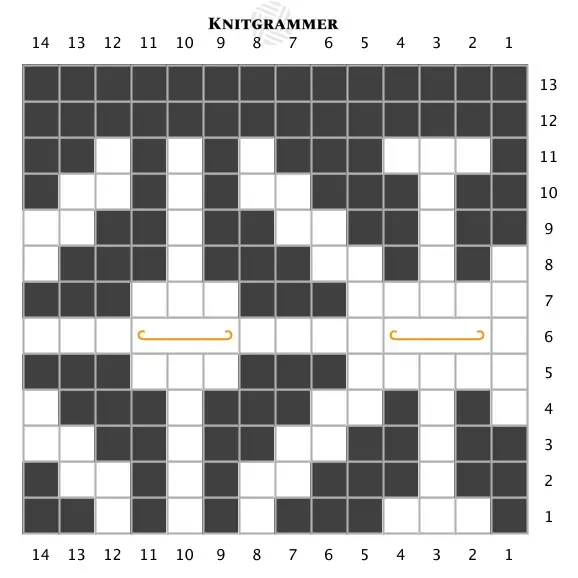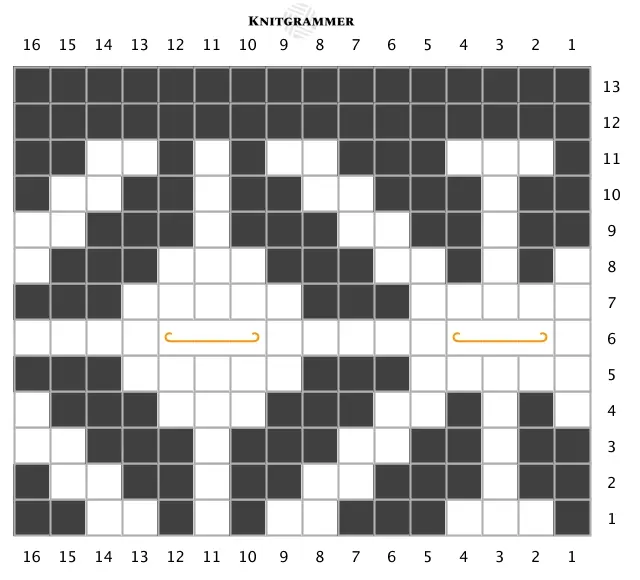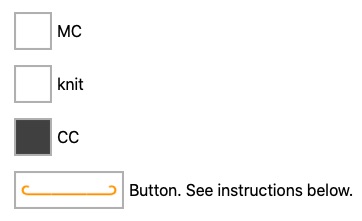I have decided to provide all my content and knitting patterns for free. This means that my income comes from advertisements.
This webiste contains affiliate links meaning that if you buy something after clicking them I may earn a small commission. This does not result in any additional costs to you and the money I get from the yarn sales enables me to use my time to create free content for you. If you decide to purchase I’m really grateful for your support!
This design is simple but the many small details such as folded cuff, colorwork bobbles, flap and tubular bind-off make it special. Because of the ribbing, these mittens fit nicely on a wide range of hands making them a perfect gift.
The name comes from the colorwork section which reminds me of a twinkling star (tuiki tuiki means twinkle twinkle in Finnish).
The pattern is available for free below. Ad-free pdf-version is available on my Etsy shop.
S (M)
S fits small women’s and M fits medium women’s or small men’s hands.
With smaller needles 28 sts and 36 rows per 4″ (10cm) in stockinette after blocking.
With bigger needles 28 sts and 36 rows per 4″ (10cm) in stranded colorwork after blocking.
Crochet hook, tapestry needle, scrap yarn. Size of the crochet hook does not matter as long as you can pick up the stitches for the flap with it.
Main needles: US 1.5 32″ [2.5mm 80cm] or longer circular needles.
Colorwork needles: US 3 32″ [3.25mm 80cm] or longer circular needles.
Adjust needle size to obtain correct gauge.
Sample uses light DK weight wool and nylon blend Novita Nalle (284 yards (260 meters) / 100g and for the bobbles fingering weight wool and nylon blend Ruskanlehti Wool sock held in double (DK). It’s ok if the bobbles are made of different weight yarn or only a single strand of fingering weight yarn. Swatch and see if you like the result.
For size S approximately 142 yds / 130 m of both MC and CC should be enough. For size M 284 yds / 260 m.
The yardage for the colorwork bobbles depends on yarn weight you use. Fingering weight held double 11 yds / 10 m.
Note that the yardage may vary if you use different yarn or gauge.
| Size | A Hand circumference | B Hand length with flap | C Hand length without flap | D Thumb opening | E Thumb length with a flap | F Cuff length |
| S | Up to 8″ Up to 20cm | 7″ 18 cm | 5″ 13cm | 2.3″ 6 cm | 2.4″ 6 cm | 3.3″ 8.5 cm |
| M | Up to 9″ Up to 23cm | 7.7″ 19.5 cm | 5.7″ 14.5 cm | 2.5″ 6.5 cm | 2.6 6.6 cm | 3.3″ 8.5 cm |
This pattern is written for the magic loop method but can be adjusted for the double-pointed needles. Knitting direction is from cuff up.
Knitting abbreviations used in this pattern you can find here.
With smaller needles and CC provisionally CO 56 (64) sts. Divide evenly over 2 needles 28 (32) sts per needle, PM (BOR), join for knitting in the round.
Work 4″ [10 cm] of ribbing *(k1, p1) repeat from * to BOR.
Undo the provisional CO and place the live sts onto the spare needle. Fold the cuff.
Next round: *(sl1 from spare needle to the left working needle, k2tog the two first sts of the left working needle), repeat from * to BOR.
You should now have a total of 56 (64) sts.
K one round and change to bigger needles. Work colorwork chart beginning from lower right corner.



Step 1: Skip three stitches. Put your right needle in between the stitches after the third stitch.
Step 2: Pull a loop between those stitches (CC2).
Step 3: Place the loop on to the left needle.
Step 4: Knit the loop through the back loop.
Step 5: Work the three skipped stitches as normal (MC) .
Step 6: pass the first stitch (the orange) over the other three stitches.
aaaaaaaa
Break CC (darker grey on the sample), change back to smaller needles, and k one row with MC (lighter grey on the sample).
For both hands repeat the increase round 6 (7) more times every 3rd round. Work in pattern between the increase rounds. A total of 70 (80) sts (16 (18) gusset sts between the markers, 42 (48) sts on Needle 1).
Work in pattern one more round.
Next round: Work in pattern the first 24 (28) sts, place next 16 (18) sts on scrap yarn for the thumb, CO 2 sts (knitted CO method).
Next round: p1, k1, place next 16 (18) sts on scrap yarn for the thumb, CO 2sts (knitted CO method).
Continue working in pattern to BOR. A total of 56 (64) sts.
Continue working in pattern 1.2 (1.9)″ [ 3 (4.5) cm]. K one round. Break MC.
With CC k one round and then work 1.2″ ( 3 cm) of ribbing *(k1, p1) repeat from * to BOR.
Bind-off using the tubular bind-off method.
Pickup the sts for the flap approximately 6 rows (0.6″ / 1.5cm) below the row where the 1 by 1 rib for the fingers begins.
With MC and crochet hook pickup and knit 28 (32) sts from the back of the mitten, CO 28 (32) sts (knitted CO method). Place the sts you picked up on Needle 1 and the sts you casted on on Needle 2.
PM and join for knitting in the round.
Repeat round 1 4 more times and then continue working 3 by 1 ribbing on Needle 2 as well. Work until the hand length with flap (see schematics and measurement B) measures 5.4 (6.1)″ [14 (15.5) cm] or 1.6″ (4cm) less than desired length.
Pattern: k the knitted sts and p the purled sts
Work one round in pattern after each decrease round except the last one.
Decrease round: *(work 6 sts in pattern, k2tog), repeat from * to BOR, a total of 56 sts
Break the yarn. Thread through a tapestry needle and draw through the remaining sts. Pull tight, through to the wrong side, and weave in end.
Place the 16 (18) thumb sts from the scrap yarn back onto the smaller needles. Pick up and knit 2 (2) sts. PM, join for knitting in the round. A total of 18 (20) sts.
Work in stockinette until your thumb measures 0.8″ / 2cm. Work 3 rounds of 1 by 1 ribbing. Bind-off using a regular bind-off method.
Work the other thumb the same way.
Pickup the sts for the flap approximately 4 rows below the row where you started to work 1 by 1 ribbing.
With the help of a crochet hook pickup and knit 9 (10) sts from the back of the thumb,
CO 9 (10) sts (knitted CO method). Place the sts you picked up on Needle 1 and the sts you casted on on Needle 2.
PM and join for knitting in the round. A total of 18 (20) sts.
On Needle 1 work in stockinette and on Needle 2 work 3 rows of 1 by 1 ribbing and then continue working in stockinette on both needles.
Work until your thumb with flap (see schematics and measurement E) 2.4 (2.6)″ [6 (6.6) cm] or desired length.
Decrease round: *(k2tog), repeat from * to BOR, a total of 9 (10) sts remaining.
Break the yarn. Thread through a tapestry needle and draw through the remaining sts. Pull tight, through to the wrong side and weave in end.
Weave in ends and block your mittens.
I would be happy to see your version! You can share it with me on Instagram by tagging me @knitgrammer or leaving a review with an image below.

I’m Ida a 30 something engineer living in Lapland, Finland. I love knitting and programming, hence the nickname Knitgrammer. In my blog you’ll find tools (knitting calculators and interactive patterns) which will save you some trouble and do the knitting math for you.
My design philosophy is to make simple, useful, and beautiful things. If I make something I (or my kids or husband) don’t enjoy wearing I won’t publish the pattern.
I’ll send you my top 5 tips of how to make a durable pair of socks.
Copyright © 2022 Knitgrammer
I’ll send you my top 5 tips of how to make a durable pair of socks.
Reviews
There are no reviews yet.